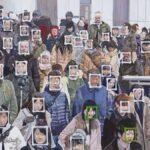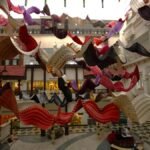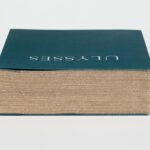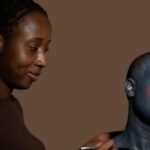
A US court has ruled that a New Hampshire town violated the First Amendment rights of a local bakery owner by trying to force the removal of a mural depicting pastries basking in sunbeams. District Judge Joseph Laplante found that the town of Conway’s enforcement of its sign ordinance against Leavitt’s Country Bakery constituted an unconstitutional restriction on free speech.
The mural, painted by local high school students, features a mountain range made of doughnuts, muffins, cinnamon rolls, and other baked goods. But town officials argued that because the artwork portrayed items sold inside the bakery, it functioned as advertising—and therefore violated Conway’s signage restrictions.
Judge Laplante disagreed. In a decision issued Monday, he noted a “complete disconnect between what the ordinance purports to regulate and the town’s enforcement, as well as the illogical way it applied and explained that enforcement” in the case of the mural. He permanently barred the town from trying to enforce the sign code against the painting.
Bakery owner Sean Young, who filed the lawsuit in 2023 after being threatened with misdemeanour charges and fines, celebrated the ruling.
The dispute centered on whether the mural was art or advertisement. The town’s zoning board concluded that because it depicted products sold inside, the mural qualified as a sign. At 90 square feet, it exceeded the town’s size limit for signage by four times. Board members said that if the painting had shown unrelated images, it would not have faced removal.
Young sought only $1 in damages, underscoring what his attorney called “a principled fight for artistic expression and community pride.”
Residents of the area also weighed in. “It’s a horrible message to send to students who worked hard to do something so beautiful for the community,” said Gay Moceri, a retired English teacher from nearby Freedom, New Hampshire, as quoted by the Associated Press.
Story continues below this ad
The town’s broad definition of a sign including “any device, fixture, placard, structure or attachment thereto that uses colour, form, graphic, illumination, symbol, or writing to advertise, announce the purpose of, or identify the purpose of any person or entity, or to communicate information of any kind”—was criticised in court for seemingly encompassing nearly all visual expression.
The case touches on deeper national debates around commercial speech, one of the most contested areas of First Amendment law. According to the Cato Institute, since the Supreme Court’s 1980 ruling in Central Hudson Gas & Electric Corp. v. Public Service Commission, courts have allowed greater government control over commercial messages than political or artistic speech.
This uneven protection has led to numerous legal challenges. When Chef Geoff Tracy, an award-winning restaurateur in Virginia, advertised happy hour specials using the phrase “two-for-one,” state regulators shut it down, citing a law banning certain language despite allowing the deals themselves. Similarly, Native artist Peggy Fontenot was told by the State of Oklahoma that she couldn’t market her work as “American Indian-made” because her tribe wasn’t state-recognised.
As for Young, the ruling is a breath of fresh air.
Story continues below this ad
“I’m thrilled that the students’ artwork can remain up, I’m thrilled that my First Amendment rights have been vindicated, and I’m thrilled that the community can continue to enjoy the beautiful piece of art,” Young said in a statement. “I think our mural is a wonderful depiction of everything that makes the Mount Washington Valley such a great place to live.”












